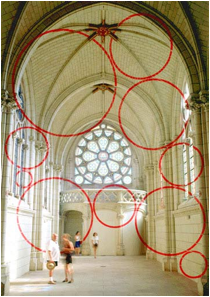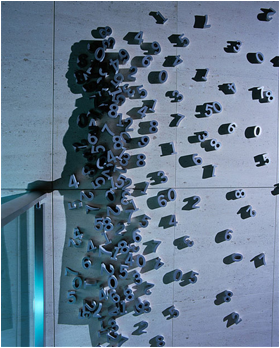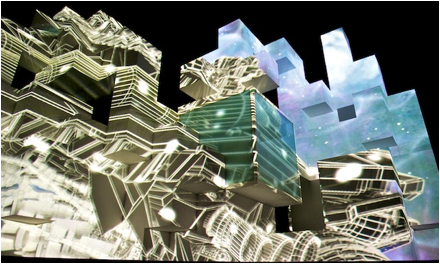Contemporary art is at the turning-point paradox. As arts realm of continual newness approaches its age of retirement, so to its inevitable historicization hides in plain sight. This unfolds a model of turning-point potential: the decoy. Modeled on the ordinary folk art object—with its capacity to be more than it appears—the decoy is initially elaborated through the concept of surplus-potential 14 . Further, the decoys axial nature—to turn from one point-of-view to another—is then overlaid with the genre of anamorphic art. So to, the concept of the decoys central anamorphic-axis is articulated in its capacity to distort or clarify what hides in plain sight. Decoys emerge precisely for the reason that they are not what they appear to be. A challenging point is the fact that this new aesthetics is about the unknown, the unpredictable, and the unforeseeable. It requires the cooperation of two brains: that of the human and the computer, for without one another it is impossible to plan or execute imaginary design spaces. Most of all, they lead to the creation of computational schemes, which are available for experimentation, analysis or play across disciplines. Dynamic design space contributes to our understanding of aesthetics and creates a new dimension of how it may change our perception. It also brings up a social point: who is the creator? How will it change our perception if science and mathematics can mold into the creative process?
Let’s try to investigate the work of 4 contemporary artists (William Kentridge, Felice Varini, Kumi Yamashita and Amon Tobin) to understand how right now contemporary visual art is dealing with the effect of developing technology. Those artists are all interested in distorted projection, they are using different media and using distortion to push a different message or a different research. |


 William Kentridge, What will come (has already come)
William Kentridge, What will come (has already come) Felice Varini, Thouars.
Felice Varini, Thouars. Kumi Yamashita, City view,
Kumi Yamashita, City view, Amon Tobin, Isam 2.0
Amon Tobin, Isam 2.0